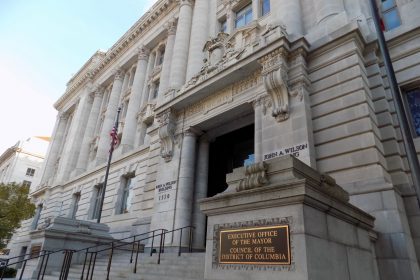Majority of Cities Felt Financial Wallop Within Weeks of COVID’s Arrival

CHICAGO — Despite an almost immediate infusion of emergency federal funding, the majority of America’s largest cities saw a sharp and lasting decline in their fiscal well-being when the coronavirus reared its ugly head, a new report says.
Published by Truth in Accounting, a think tank that analyzes government financial reporting, the latest Financial State of the Cities survey offers a snapshot of what it was like in 2020 when even the most considered fiscal plan suddenly flipped upside down.
“The bottom line is that the majority of cities went into the pandemic in poor fiscal health and they will most likely come out of it even worse,” says Sheila Weinberg, founder and CEO of Truth in Accounting.
What that snapshot reveals is that despite the CARES Act and other COVID-19-related grants, total debt among the 75 largest U.S. cities amounted to $357 billion by the end of the 2020 fiscal year — some $23.5 billion worse than the previous fiscal year.
Most of this debt comes from unfunded retirement benefit promises, such as pension and retiree health care debt.
Even worse, 61 of the 75 cities included in the survey did not have enough money to pay their bills, the survey found.
Worst of all, because of the uncertainty that still surrounds the coronavirus, no one can predict when some of these cities will make their balance of payments.
The uncertainty surrounding this crisis makes it impossible to determine how much will be needed to maintain government services and benefits.
On a positive note, the report found that 14 of the largest cities had more than enough money to pay their bills, an indicator of longer-term financial health.
At the top of the list was Washington, D.C., which had the best city finances in the U.S. during the pandemic with a $1.3 billion surplus.
At the other end of the scale was New York City, which claimed the prize for worst municipal finances in the United States for the sixth year in a row.
Truth in Accounting quantifies these fiscal calamities through a simple formula that takes the amount of money needed and then divides it by the estimated number of city taxpayers.
The result is a figure that Truth in Accounting calls the “Taxpayer Burden.” (Conversely, using the same formula, TIA comes up with what it calls the “Taxpayer Surplus.”)
So in D.C., for instance, each taxpayer’s share of the surplus is $4,800. In New York City, sadly, each resident taxpayer would have to pay $71,400.
Taken together, the average taxpayer burden across all 75 cities in the report works out to $7,731.
To compile the 2022 Financial State of the Cities survey, analysts for Truth in Accounting relied on data from the fiscal year 2020’s audited Comprehensive Annual Financial Reports on file in city halls across the country.
Dan can be reached at [email protected] and at https://twitter.com/DanMcCue
























